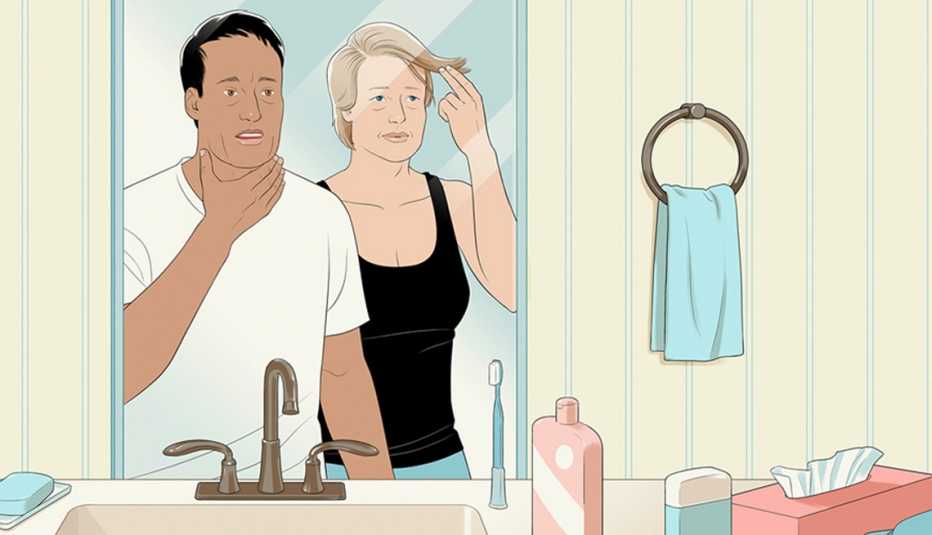Staying Fit


Spending just a few minutes doing self-exams could help you find cancer, eye disease, foot problems, osteoporosis, gum disease and more. These exams shouldn’t replace or even postpone any regular medical visits or tests, but they could help you know when it’s time to see a doctor or get a condition checked.
Here are eight body parts that are worth some close attention, how to do the self-exam, and which telltale signs mean it’s time to book an appointment.


AARP Membership— $12 for your first year when you sign up for Automatic Renewal
Get instant access to members-only products and hundreds of discounts, a free second membership, and a subscription to AARP the Magazine.


1. Skin
What to look for: New spots or lesions, or preexisting moles that seem to be changing color, shape or size. Women should pay special attention to their lower legs, and men, to their backs.
How to do it: Closely inspect your face and ears, torso (including beneath the breasts), arms and underarms, and the fronts of your legs. Also check the soles of your feet and the palms of your hands, especially paying attention to moles that are asymmetrical or rough-looking without clearly defined borders.
Who to call: Your dermatologist, who will thoroughly examine your skin to identify any potentially cancerous lesions.
2. Eyes
What to look for: A crusty material accumulating along the eyelash line. Your eye might also feel irritated, gritty or itchy. Up to half of all adults will develop this condition, called blepharitis. The issue is easy to self-diagnose, says Olivia Killeen, M.D., an ophthalmologist at the University of Michigan.
How to do it: Mix a few drops of no-tears baby shampoo, gentle facial cleanser or commercial eyelid cleansing solution with a bit of water until frothy, then gently massage it onto one eyelid at a time, rinsing well. If the flakes dissolve and the irritation subsides, you’ve got this under control; simply follow this routine every few days.
Who to call: If this simple treatment doesn’t pan out, you may have a more serious issue. Contact an optometrist or ophthalmologist.




































































More on Health
Is Caffeine Good or Bad For Your Eyes?
How your morning (and afternoon) cups of coffee affect five eye conditions
6 Body Parts You Should Never Ignore After 50
Pay special attention to these susceptible areas as you age
The #1 Exercise to Do as You Get Older
If you only have time for one exercise, fitness experts say, do this one
Try These Tips for Living a Healthier Life
Small changes can add up to big mental and physical results